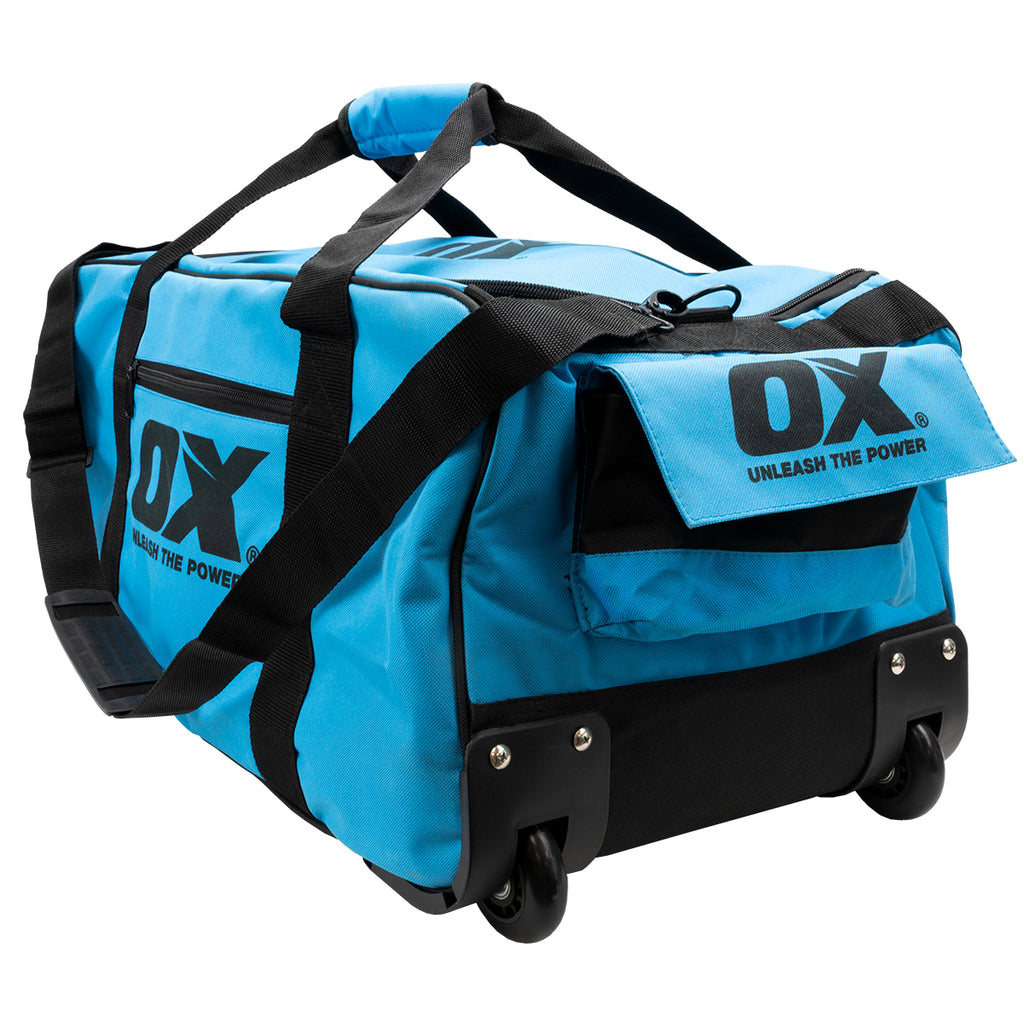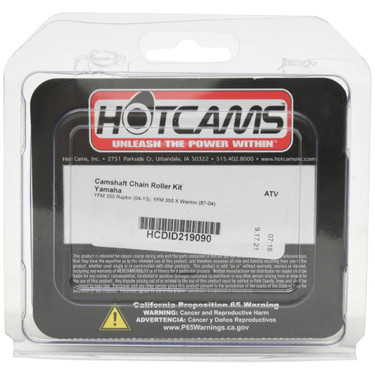Rollers are cylindrical tools used for flattening, compacting, or spreading materials such as soil or asphalt. In construction and landscaping projects, rollers play a crucial role in achieving smooth, level surfaces.
Welcome to our comprehensive guide on rollers. Whether you’re a construction professional or a homeowner working on a DIY project, understanding the different types of rollers, their uses, and the benefits they offer is essential. Rollers come in various sizes, configurations, and designs to meet specific requirements.
From compactors that ensure soil stability to asphalt rollers that create durable road surfaces, rollers prove invaluable in achieving high-quality results. In this guide, we’ll delve into the different types of rollers available, their applications, and the factors to consider when choosing the right roller for your project. So let’s get started and explore the world of rollers in detail.

Credit: www.oxtoolshop.com
The Science Behind Rollers: Unleash The Power Within
Rollers have long been recognized as essential tools in various industries and applications. They are designed to efficiently distribute forces and support the movement of objects, making them versatile and reliable. However, have you ever wondered how rollers work? Delve into the science behind rollers with us and discover how they unleash their power within to optimize performance.
Rollers: A Brief Introduction To Their Functionality
Before we explore the mechanics behind rollers, let’s start with a brief introduction to their functionality. Rollers, also known as rolling elements, are cylindrical or spherical objects that come in various shapes, sizes, and materials. They are commonly used in machinery, conveyors, bearings, and other applications where a smooth and controlled motion is required.
Rollers serve as a means to reduce friction and distribute loads, enabling the efficient movement of objects. By its very nature, a roller’s purpose is to facilitate smooth rolling or sliding motion, enhancing the overall performance of the system it is integrated into.
How Rollers Utilize Mechanical Force For Optimal Performance
Rollers utilize mechanical force to optimize their performance. By harnessing this force, they enable smoother movement, reduce friction, and enhance the overall efficiency of the system. Let’s explore how rollers accomplish this:
- Reduced Friction: Rollers consist of materials with low friction coefficients, such as metal, plastic, or ceramic. These low-friction materials minimize the resistance encountered during motion, allowing the system to operate with minimal energy loss.
- Bearing Support: Rollers often accompany bearings, which are components that provide support and facilitate smooth rotation. Bearings evenly distribute the load across the roller, preventing excessive stress and improving its longevity and performance.
- Efficient Load Distribution: Rollers distribute the applied force evenly, promoting efficient load distribution across the system. This prevents any localized stress concentrations, ensuring the integrity of the components and reducing the risk of failure.
- Self-aligning Capability: Certain types of rollers, such as spherical rollers, possess a self-aligning capability. This means that they can adapt to misalignments in the system, maintaining smooth operation even in suboptimal conditions.
- Enhanced Speed and Efficiency: Rollers enable systems to operate at higher speeds due to their low friction, resulting in increased efficiency and productivity. This is especially crucial in industries where time is of the essence.
All these features combine to make rollers indispensable components in a wide range of applications. By utilizing mechanical force, rollers enhance performance, reduce wear and tear, and increase the lifespan of various systems.
The Benefits Of Using Rollers In Your Daily Routine
Rollers have become a popular tool for fitness enthusiasts and athletes alike due to their numerous benefits. Incorporating rollers into your daily routine can not only enhance muscle recovery and prevent injuries but also increase flexibility, improve circulation, and boost overall performance and athleticism. Let’s explore these benefits in more detail:
Enhancing Muscle Recovery And Injury Prevention
Using rollers can greatly aid in muscle recovery after workouts and physical activities. The repetitive motion of rolling helps to break up adhesions and knots in the muscles, known as trigger points. By targeting these trigger points, rollers enable increased blood flow and oxygenation to the muscles, accelerating their repair and recovery process. Regularly incorporating a roller into your routine can also help prevent injuries by improving muscle function and reducing the risk of muscle imbalances.
Increasing Flexibility And Range Of Motion
One of the key benefits of using rollers is their ability to increase flexibility and range of motion. As we age or engage in consistent physical training, our muscles can become tight, leading to restricted movement. By applying pressure on tight or stiff muscles with a roller, you can help release tension and improve their flexibility. This increased range of motion can enhance your performance in various activities and decrease the likelihood of muscle strains or joint injuries.
Improving Circulation And Blood Flow
Rolling also stimulates blood circulation throughout your body. The pressure applied by the roller encourages the flow of oxygen-rich blood to your muscles, helping remove metabolic waste products and toxins. This improved circulation not only supports muscle recovery but also contributes to overall cardiovascular health. Regular use of rollers can help improve the efficiency of your body’s natural blood circulation, ensuring that the necessary nutrients reach your muscles and tissues more effectively.
Boosting Overall Performance And Athleticism
By incorporating rollers into your daily routine, you can experience a significant boost in your overall performance and athleticism. The improved muscle recovery, increased flexibility, and enhanced circulation provided by rollers can optimize your physical capabilities, allowing you to reach new levels in your training or sports activities. Whether you are a professional athlete or a weekend warrior, rollers can help you maximize your potential and excel in your respective field.
Unlocking The Power Of Rollers: Best Practices And Techniques
Rollers are incredibly versatile pieces of equipment that can enhance your fitness routine and help you achieve your goals. Whether you’re looking to improve flexibility, relieve muscle tension, or enhance your athletic performance, understanding the best practices and techniques for using rollers can make a significant difference in your results. In this blog post, we’ll dive into the proper body positioning and alignment, choosing the right roller for your needs, and targeted roller techniques for different muscle groups.
Proper Body Positioning And Alignment
Proper body positioning and alignment are crucial when using rollers to ensure the effectiveness and safety of your exercises. By maintaining the correct posture, you can target specific muscle groups more effectively while reducing the risk of injury.
Here are some best practices for proper body positioning and alignment:
- Start by positioning yourself on the roller, ensuring that your body is aligned with the roller’s length. Your head, shoulders, and hips should be in a straight line.
- Engage your core muscles to stabilize your body and maintain balance throughout the exercise.
- Keep your movements slow and controlled, avoiding any jerking or sudden motions that may strain your muscles.
- Breathe deeply and consciously to relax your muscles and enhance the effectiveness of the exercise.
Choosing The Right Roller For Your Needs
When it comes to rollers, there are various types and textures available, each designed to target different muscle groups and provide different levels of intensity. Choosing the right roller for your needs is essential to optimize your workout and achieve the desired results.
Consider the following factors when selecting a roller:
- Density: Firmer rollers are ideal for deep tissue massage and trigger point release, while softer rollers are suitable for beginners or individuals with lower pain tolerance.
- Texture: Textured rollers, such as those with bumps or ridges, provide additional stimulation and can effectively target specific muscle groups.
- Size: The size of the roller can affect its versatility and portability. Longer rollers are suitable for full-body exercises, while shorter ones are more convenient for travel.
Targeted Roller Techniques For Different Muscle Groups
Each muscle group in your body requires specific techniques to effectively release tension and improve flexibility. By targeting these muscle groups with the right roller techniques, you can maximize the benefits of your rollers in your fitness routine.
Here are some targeted roller techniques for different muscle groups:
| Muscle Group | Technique |
|---|---|
| Quadriceps | Roll the front of your thighs using a long, smooth stroke from the hip to above the knee. |
| Hamstrings | Lie with your hamstrings on the roller and roll from below the glutes to just above the knee. |
| Calves | Place one leg on the roller, and roll from below the knee to above the ankle. Repeat with the other leg. |
| Back | Position the roller beneath your upper back, and roll from the mid-back to the upper back, focusing on any tight spots. |
By applying these targeted techniques, you can address the specific needs of each muscle group and enhance your overall performance.
Incorporating Rollers Into Your Fitness Routine: Practical Tips And Strategies
Incorporating rollers into your fitness routine is a practical way to challenge your muscles and improve flexibility. Discover effective tips and strategies to maximize the benefits of rollers in your workouts.
Pre-workout Warm-up With Rollers
Utilizing rollers for a pre-workout warm-up can enhance your performance and reduce the risk of injury. By focusing on key muscle groups, rollers can help to increase blood flow and flexibility. Start by using a foam roller to massage the larger muscle groups such as your quads, hamstrings, and calves. Apply gentle pressure and roll slowly along the muscle, pausing on any tight knots or areas of discomfort. This will help to release tension and improve mobility.
Post-workout Recovery And Regeneration With Rollers
After an intense workout, incorporating rollers into your recovery routine can aid in muscle repair and alleviate soreness. Foam rolling is an effective technique for reducing muscle stiffness and enhancing circulation. Use a roller to target specific areas of tightness or discomfort, applying your body weight on the roller and moving slowly back and forth. This self-myofascial release technique can reduce muscle tension and improve overall recovery time.
Using Rollers For Active Rest Days And Injury Rehabilitation
Rollers are not just limited to pre and post-workout routines. They can also be utilized on active rest days and during injury rehabilitation. On rest days, using a foam roller can promote blood flow to aid in muscle recovery and prevent stiffness. When recovering from an injury, rollers can assist in breaking down scar tissue and improving flexibility in affected areas. However, it is important to consult with a healthcare professional or physical therapist before incorporating rollers into your rehabilitation routine, as they can provide guidance on the appropriate techniques and intensity level.
By incorporating rollers into your fitness routine, you can enhance your warm-up, recovery, and rehabilitation processes. Whether it’s using rollers to loosen tight muscles before a workout, aiding in muscle repair after an intense session, or promoting blood flow during rest days, rollers are versatile tools that can benefit athletes and fitness enthusiasts of all levels. Remember to always listen to your body and adjust the pressure and intensity of your rolling accordingly.
Beyond The Basics: Advanced Roller Techniques And Innovations
Beyond the Basics: Advanced Roller Techniques and Innovations
The humble foam roller has come a long way since its inception. What was once seen as a simple tool for self-massage and muscle recovery has now evolved into a sophisticated piece of fitness equipment with a wide range of advanced techniques and innovations. In this article, we will explore the latest roller innovations and technologies, advanced techniques for foam rolling mastery, and alternative roller types for specific needs.
Understanding The Latest Roller Innovations And Technologies
With advancements in technology, foam rollers have become more than just a cylindrical piece of foam. Manufacturers are constantly developing new materials and designs to enhance the effectiveness and usability of these tools.
| Innovation/Technology | Description |
|---|---|
| High-Density Foam Rollers | These rollers are made from denser foam and provide a firmer surface for deep tissue massage. |
| Textured Surfaces | Rollers with textured surfaces offer a more targeted massage and help to stimulate blood flow. |
| Vibrating Rollers | These rollers provide high-frequency vibrations, which can further enhance muscle relaxation and recovery. |
By understanding the latest roller innovations and technologies, you can select the most suitable roller for your needs and optimize your foam rolling routine.
Advanced Techniques For Foam Rolling Mastery
While basic foam rolling techniques can provide relief and maintenance for your muscles, advanced techniques can take your foam rolling mastery to the next level. Incorporating these techniques into your routine can help with improved mobility, muscular performance, and injury prevention.
- Trigger Point Release: By targeting specific trigger points, you can release muscle knots and improve overall muscle function.
- Myofascial Release: This technique involves rolling along the muscle fibers to release tension in the fascia and enhance flexibility.
- Active Release Technique: Combining foam rolling with active movements can help improve joint mobility and muscle activation.
By incorporating these advanced techniques into your foam rolling routine, you can maximize the benefits and achieve better results.
Exploring Alternative Roller Types For Specific Needs
While foam rollers are the most popular choice for self-myofascial release, there are alternative roller types available to cater to specific needs and preferences. These alternative roller types offer unique features and benefits that may better suit individuals with specific requirements.
- Grid Rollers: These rollers feature a grid-like pattern that provides a more targeted massage.
- Handheld Rollers: Compact and portable, handheld rollers allow for more precise targeting of specific areas.
- Massage Sticks: Ideal for targeting smaller muscles or hard-to-reach areas, massage sticks offer a more focused massage.
By exploring alternative roller types, you can find a tool that best suits your needs and ensures a more effective self-myofascial release.
Frequently Asked Questions For Rollers
Are Rollers Better For Your Hair?
Yes, rollers are better for your hair. They help add volume, create curls, and reduce heat damage. Rollers also provide a gentle way to style your hair without causing breakage.
Are Steam Rollers Better Than Hot Rollers?
Steam rollers are different from hot rollers in terms of how they work. While steam rollers use heat and moisture to create curls, hot rollers rely solely on heat. The choice between the two depends on personal preference and hair type for the desired result.
Do Rollers Work Better On Wet Or Dry Hair?
Rollers work best on dry hair to help set and hold the style. Wet hair can take longer to dry, and the moisture can limit the effectiveness of the curlers. Dry hair allows for better heat distribution and a longer-lasting curl.
What Are Rollers Used For?
Rollers are used for smoothing and compacting surfaces, such as roadways and fields. They help to even out uneven terrain, crush rocks, and create a level and stable surface for construction or agriculture purposes.
Conclusion
To sum it up, rollers are an essential tool for various industries, providing efficient and effective solutions for transportation, manufacturing, and more. Investing in high-quality rollers can lead to improved productivity, reduced downtime, and increased overall efficiency. With the right rollers in place, businesses can optimize their operations and stay ahead of the competition.
So, don’t underestimate the power of rollers and the impact they can have on your business’s success.

Maruf, a true pigeon aficionado, finds solace and joy in the company of these graceful birds. His unwavering devotion to pigeons is a testament to his deep appreciation for their beauty and grace. Maruf’s passion for caring for and nurturing these feathered friends is truly inspiring to fellow bird enthusiasts.
